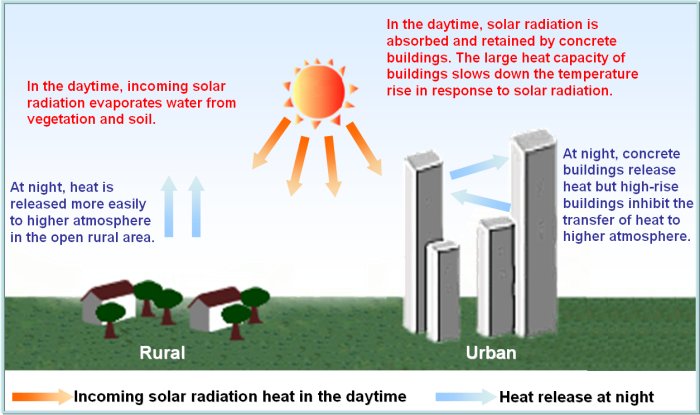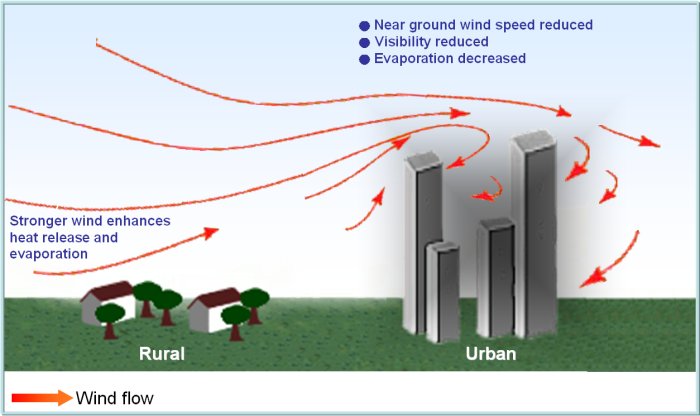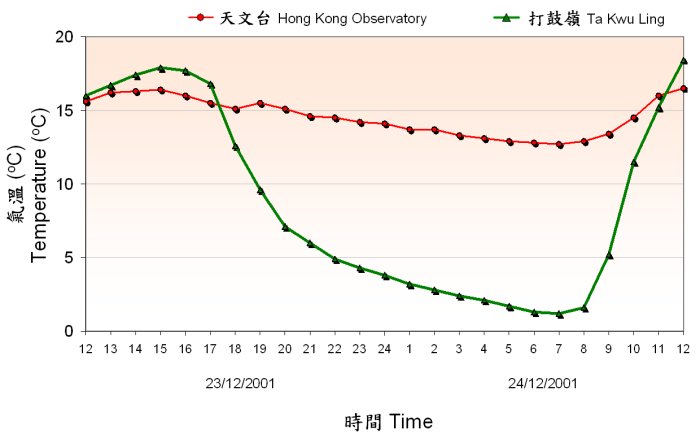Urbanization Effect
Related Topics |
Urbanization Effect |
Urban development, including land use changes, dense building developments, heat emissions, human activities, etc., has a great impact upon the local climate of a city. One of the best-known effects of urbanization is the urban heat island (UHI) effect, which develops when urban cooling rates are slower than rural ones. Some of the main factors that may bring about the difference in temperatures between urban and rural areas include :
In Hong Kong, the UHI effect is primarily a nighttime phenomenon. The UHI effect (temperature difference between urban and rural areas) is more significant in winter and is usually best displayed on individual days with stable atmosphere, light winds and a clear sky.
Rainfall over different regions of Hong Kong was generally on a rising trend. The increasing trend was higher in the urban areas than the New Territories, offshore islands and high grounds. Urbanization is one of the possible causes for the increasing trend and regional variation of rainfall in Hong Kong. Higher temperature in urban areas enhances convective activities and the increase in concentration of suspended particulates from urban activities favours the formation and development of rain-bearing clouds. Reference: H.Y. Mok Y.K. Leung T.C. Lee M.C. Wu: Regional Rainfall Characteristics of Hong Kong Over the Past 50 Years
|
|
|



